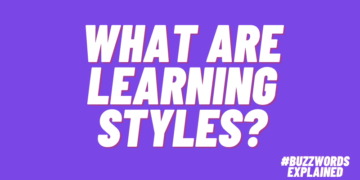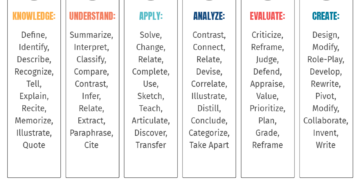Video-Based Learning As We Know It Today
The remote learners of today are very particular about how they want to access information and learn. They get easily distracted and end up multitasking, and they definitely don’t want to invest a large amount of time in training.
They require training to be flexible, on-the-go (mobile learning), bite-sized, and focused, which helps them learn or solve a problem (microlearning). And it should be delivered in engaging and immersive formats that help them learn, practice, or handle a challenge. Video-based learning offers a great way to create immersive learning experiences while leveraging mLearning and microlearning that learners love.
Videos are great as a remote learning tool and have been recognized as a useful supplement for Virtual Instructor-Led Training (VILT) as well as training in a blended mode. They not only help in cognitive load reduction but also grab viewer attention and increase learner engagement. Unlike text or infographics, video content can help express multifaceted aspects of a topic, and that creates a compelling watch and a more engaging learning experience. Compared to still graphics, text, or audio, videos offer a higher recall and retention to an attentive and captive audience.
Here are a few qualities of training videos that make them a popular option for remote training:
- Videos lead to “stickiness” of learning
Learners generally find well-created video content more engaging and “addictive” compared to slides and diagrams. This causes them to stick around for the entire course and even leaves them wanting more.
- They foster change in thinking
When learners read about a new concept or idea, they tend to mull over it and move on. By seeing that concept in motion, be it through online training videos—especially with short-form microlearning examples—you can offer learners a pause for thought, which leads to changes in how they think about what they just learned.
- They facilitate change in behavior
Text-based or audio training is great for directing learners and telling them what to do. Yet, when it comes to promoting behavioral change, nothing compares to online training videos, including gamification, simulations, and other interactive content, that has the power to demonstrate the predicted behavior for learners to practice and model.
- They appeal to the multigenerational workforce
Cross-generational learning audiences prefer mobile learning with its small-footprint content delivered as microlearning nuggets of videos, which is extremely popular right now.
Why Should You Integrate Videos Into Your Corporate Training Strategy?
Videos can be used to address a wide spectrum of corporate training needs spanning across the following:
- Online formal training that can be taken on the go.
- Support Instructor-Led Training (ILT)—pre-workshop, during, and post-workshop.
- Instant or just-in-time learning aids.
- Informal learning.
- Social learning.
Besides learning (formal, informal, online, or to support ILT), videos can be leveraged for your crucial or strategic corporate initiatives, including:
- Establishing awareness.
- Supporting change management (pre and post).
- Fostering an ongoing connection with the learners (post the completion of the training).
Interactive videos and videos in next-gen formats can be utilized to create highly engaging and immersive learning experiences for your remote learners.
With the interactive video-based approach, you can overlay the following:
- Learning interactions that are similar to eLearning, including click-and-reveal, carousel, hotspots, and so on.
- Gamification elements.
- Checkpoints of the learning through interim knowledge checks and end-of-video assessments.
- Complex decision-making-based learning paths that can provide learners with different branches of learning paths based on their choices.
- Learning aids that also include quick-reference guides (QRGs), ready reckoners, and learning summaries.
What Tips And Strategies Can Make Your eLearning Videos Engaging For Digital Learners?
The following are 5 proven tips of transformational strategies that will turn any “ordinary” eLearning video content into highly engaging eLearning resources for your digital learners.
1. Spark Curiosity
Curiosity is an innate human quality that drives the need to learn via exploration. One way to tap into that aspect of human nature and create course engagement is by featuring snippets (of the more interesting bits) of the video as explainers or as the introduction to eLearning videos. Tactics such as the use of teaser videos help spark curiosity and raise awareness among digital learners and fan their desire to know more about the featured topic or module.
2. Hook Your Audience’s Attention
Upon igniting a learner’s curiosity, it is imperative that trainers retain that attention throughout the video lesson. One approach is to use analytics tools to gauge the parts of the video that grab the most attention. Once the videos are launched, do learners quickly forward to a specific section? Do they frequently replay/rewind or watch specific segments? Comprehending learner behavior at this level will allow course designers to revamp and rework their video content. Do this to leverage the more attention-grabbing sections of the video lessons to keep digital learners engaged.
3. Use Eye-Catching Graphics
Make the content appealing so that learners can benefit from the eLearning videos. Avoid boring POV-type videos. Offer your digital learners eye-candy video treats by integrating graphic imagery, high-fidelity video quality, and breathtaking animation.
4. Leverage Audio
As quickly as eye-catching visuals can draw learners to your videos, poor-quality audio can turn them off. Ensure that the video and audio are perfectly synched. Avoid using overbearing background music/soundtracks during narrations. More significantly, make use of a narrator with a strong and powerful voice.
5. Incorporate Storytelling
Audiences love a good story—and those watching eLearning videos aren’t an exception. The secret to a successful use of video content as an engaging digital learning aid is to weave elements of suspense, purpose, cause and effect, and final outcomes/accomplishments within the video.
- Build your course around a defined narrative—for example, a production issue on the factory floor—and use micro video modules (in concert with other course elements) to take the digital learner through a journey of discovery—from understanding the issues to finding a solution.
- An effective strategy is to create eLearning videos around a plot or storyline—but one that’s relatable to your learner audience. Use a work-related case study, a customer success story, or an appropriate use case to gradually (in 5–10-minute snippets) progress the story through the course. It is essential that the video component of the story perfectly aligns with other aspects of the course: the audio, text, slides, exercises, and assignments.
What Are The 5 Major Benefits Of Video-Based Learning?
Interactive
Interactive videos enable you to handle the challenge of the passivity of classic videos.
Encourages Creative Thinking
You can sharpen critical thinking and “think on your feet” decision-making skills with the help of branching videos.
Supports Multiple Devices
You can use interactive video-based learning as short, bite-sized nuggets. Learners can consume this learning when they’re on the go, as well as on the device of their choice.
Promotes Microlearning
When offered as a part of learning paths featuring microlearning nuggets, videos can be used for formal training as well as for performance support.
Cost-Effective
Till a few years ago, the video-based learning strategy had to factor in high costs. Currently, you have a wide range of video development tools to complement lower budgets.
What Does The Future Of Video-Based Learning Look Like?
While the usage of videos for learning has been there for a while, they are taking center stage as a key strategy to design employee training in 2022. We see the new workplace dynamic, heralded through the broader post-pandemic adoption of the hybrid workplace model, further entrenching itself in the coming year. As a result, L&D teams will look to implement learning and training strategies that better resonate with their learning audiences. Compared to many others, video-based learning is one medium that can deliver a more engaging learning experience to hybrid workers.
As more organizations pivot to a hybrid workplace in 2022 and beyond, we see the adoption of video-based learning not as a “nice to have” strategy, but as the go-to teaching aid for most corporate learning programs.
Parting Thoughts
I hope this article provides the requisite insights on why you should leverage videos in your online corporate training.

EI
EI is an emotionally intelligent learning experience design company that partners with customers in their Digital Transformation journey.
Originally published at www.eidesign.net.




















